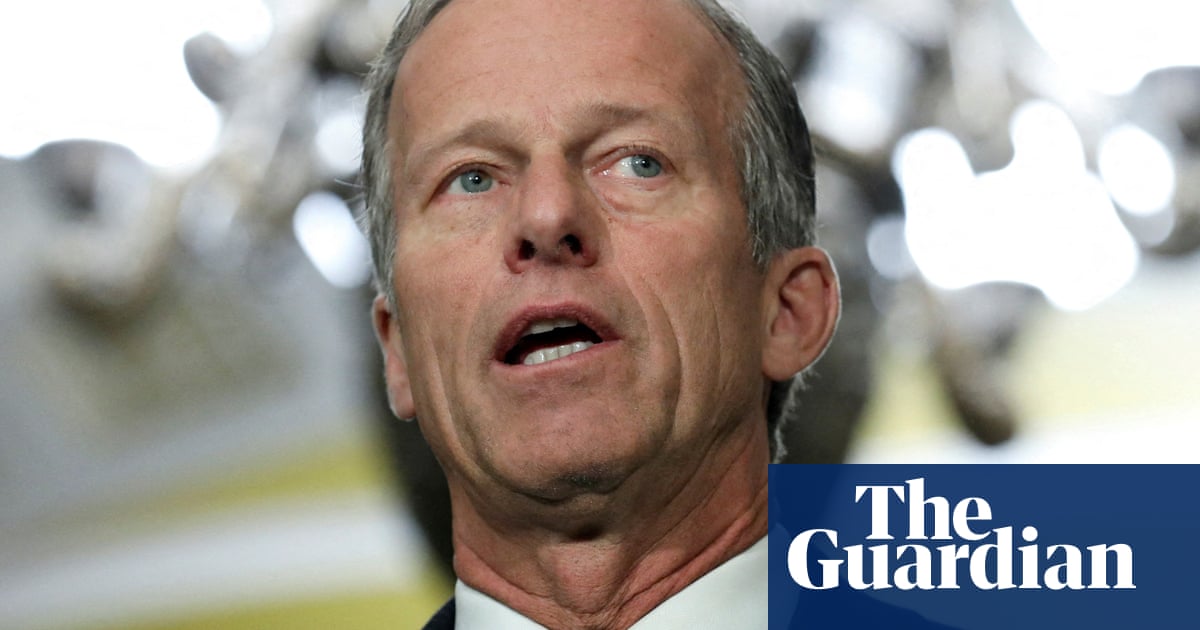The Stalled Senate Vote on Trump’s “One Big Beautiful Bill Act”
A dramatic vote unfolded in the U.S. Senate on Saturday regarding “the One Big Beautiful Bill Act,” a proposed package of tax breaks, spending cuts, and funding for bolstered deportations aimed at energizing Donald Trump’s legislative agenda. The bill faced significant tension and challenges as Republican senators grappled with internal dissent and external pressures.
The Voting Dynamics
The vote commenced at 7:30 pm local time in Washington, and it was clear from the outset that the proposed legislation was facing a rocky road. Just after the vote began, three Republican senators joined all 47 Democrats in opposing the bill. This development left the remaining 50 Republican senators with the daunting task of unifying behind the bill to enable Vice President JD Vance to cast a tie-breaking vote.
Trump’s Pressure on Senators
Thom Tillis, a Republican senator from North Carolina who voted against the bill, quickly became a target for Trump’s ire on social media. Trump warned that numerous candidates were considering running against him in the primary, signaling a clear message of accountability to dissenters. Tillis’s stance particularly reflected the growing rift within the party as some senators began to feel the pressure while others openly opposed the bill.
Republicans’ Legislative Timeline
The urgency surrounding the vote stemmed from Republicans’ desire to meet Trump’s imposed deadline of July 4 for the legislation to clear both chambers and be signed into law. Despite holding majorities in Congress, the GOP faced significant challenges in navigating the proposal through a landscape rife with political and procedural setbacks.
Internal GOP Conflict
Not all Republican senators were in agreement on the proposed spending cuts to crucial programs like Medicaid and food stamps, areas where reductions were being suggested to fund the approximately $3.8 trillion in tax breaks sought by Trump. This divergence within Republican ranks highlights the complex nature of coalition-building within a party that traditionally espouses fiscal conservatism but appears split on reform strategies.
White House Support
As senators prepared for the vote, the White House emphasized its strong backing for the bill. It was positioned as a legislative plan that would implement critical elements of the president’s platform. Meanwhile, Trump was seen engaging with senators at his golf course in Virginia, which included discussions with holdouts like Rand Paul; Paul ultimately chose to vote against advancing the legislation.
The Lengthy Process Ahead
Following the release of the 940-page bill just before midnight on Friday, senators were bracing for what promised to be lengthy and contentious debate. With the prospect of up to 24 hours of discussion ahead, it was clear that if this legislation were to pass, it would require significant negotiation and compromise.
Criticism from Influential Figures
Adding another layer of contention, billionaire Elon Musk, a noted Trump donor, openly criticized the Senate’s draft on social media, calling it harmful and potentially job-destroying for the U.S. He suggested that the bill disproportionately favored outdated industries while jeopardizing future technological advancements, particularly in green energy.
Counterarguments from Supporters
In a passionate plea, Ohio Senator Bernie Moreno defended the bill, challenging its critics to read the legislation in full. His call to action highlighted a common strategy among Republicans aiming to downplay dissent and garner support from senators wary of potential fallout from opposing the measure.
Preparedness for Democratic Response
Democrats, led by Minority Leader Chuck Schumer, were prepared to mount a robust challenge against the legislation. Schumer announced plans to force the bill to be read aloud in its entirety before a final vote, a procedural move intended to delay and spotlight the contentious elements within it, deeming Republicans’ quick drafting as a tactic of secrecy.
High Stakes for Trump’s Agenda
This weekend session posed a significant test for Trump’s political capital and his party, illustrating how pivotal this legislation is for his domestic policy ambitions. While Trump expressed confidence in his party’s ability to deliver, he simultaneously called out those he perceived as “grandstanders,” implying that this was a moment for unity.
Complex Legislative Proposals
At its core, the bill aims to make many of the tax cuts from Trump’s first term permanent while introducing new breaks—such as eliminating taxes on tips—and committing substantial funds to national security and deportation initiatives. However, the funding cuts essential for offsetting new tax revenues have proven controversial, underscoring the complexity of balancing economic interests and social welfare among competing factions within the party.
Diverging Opinions from Key Senators
Republican senators like Thom Tillis expressed reservations about the package’s fundamentals, while Rand Paul raised alarms regarding its implications for the national debt. Others like Ron Johnson sought deeper budget adjustments, adding to the already complicated legislative negotiations.
Compliance and Approval Challenges
The Senate’s Parliamentarian played a role in scrutinizing the bill for compliance with legislative rules, contributing to delays in the release of a final text. The potential inclusion of contentious policy matters into this significant budget bill illustrates the intricate dance of legislative governance in a polarized Senate.
Republican Setbacks and Revisions
The legislative effort suffered a series of setbacks over compliance issues, leading to last-minute revisions. These challenges reflect the dynamics of negotiation, where shifting party priorities and external pressures can dramatically alter legislative approaches in real-time.
Potential Impact of the Legislation
Early evaluations from nonpartisan observers indicated that the House version could significantly impact healthcare access, with millions potentially losing benefits as a result of the proposed cuts. The Senate draft raises additional concerns, with discussions about tax cuts benefiting high earners while potentially imposing greater burdens on low-income families.
Through these multifaceted interactions, the Senate’s handling of the “One Big Beautiful Bill Act” encapsulates the challenges and divisions within contemporary American governance, illustrating a pivotal moment shaped by partisan strife, legislative maneuvering, and the ever-present specter of public opinion.


